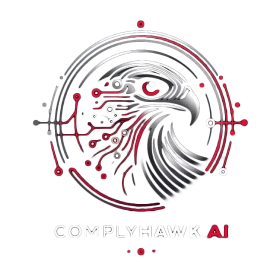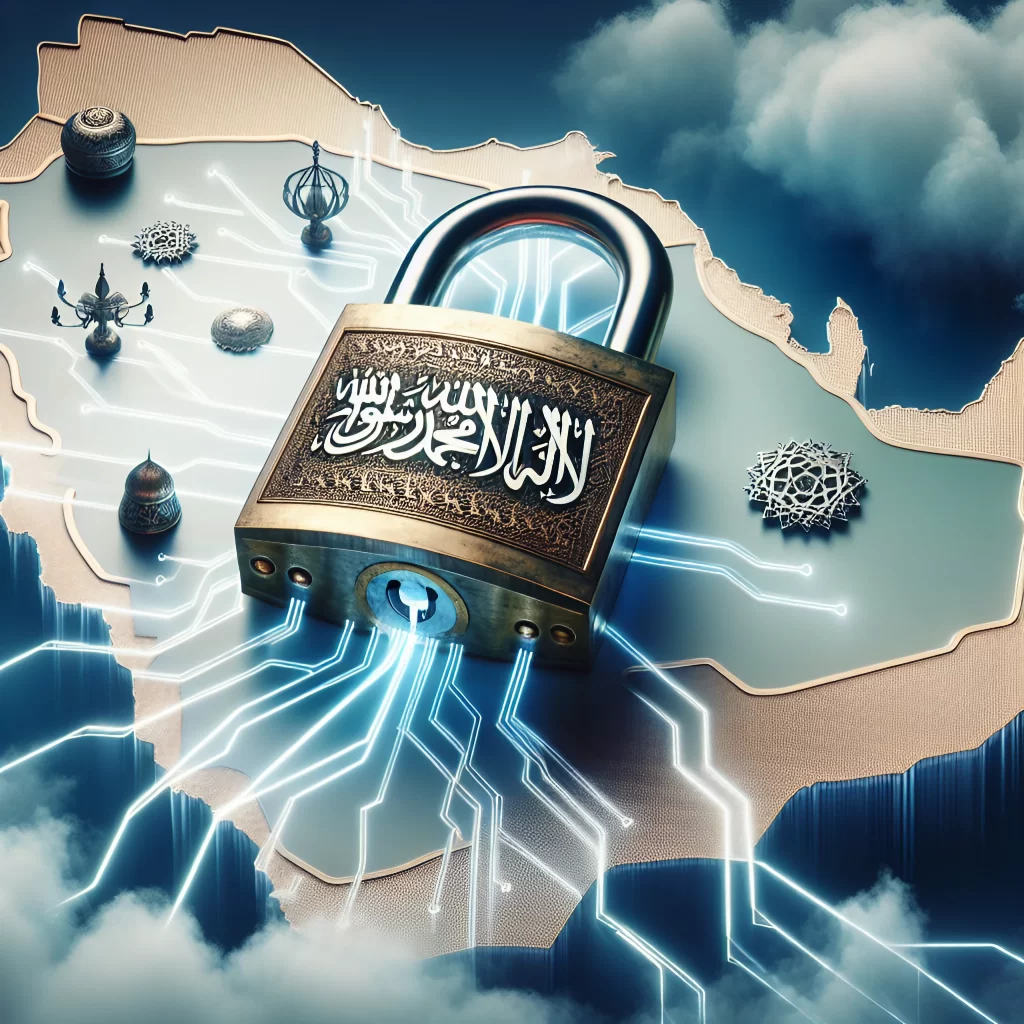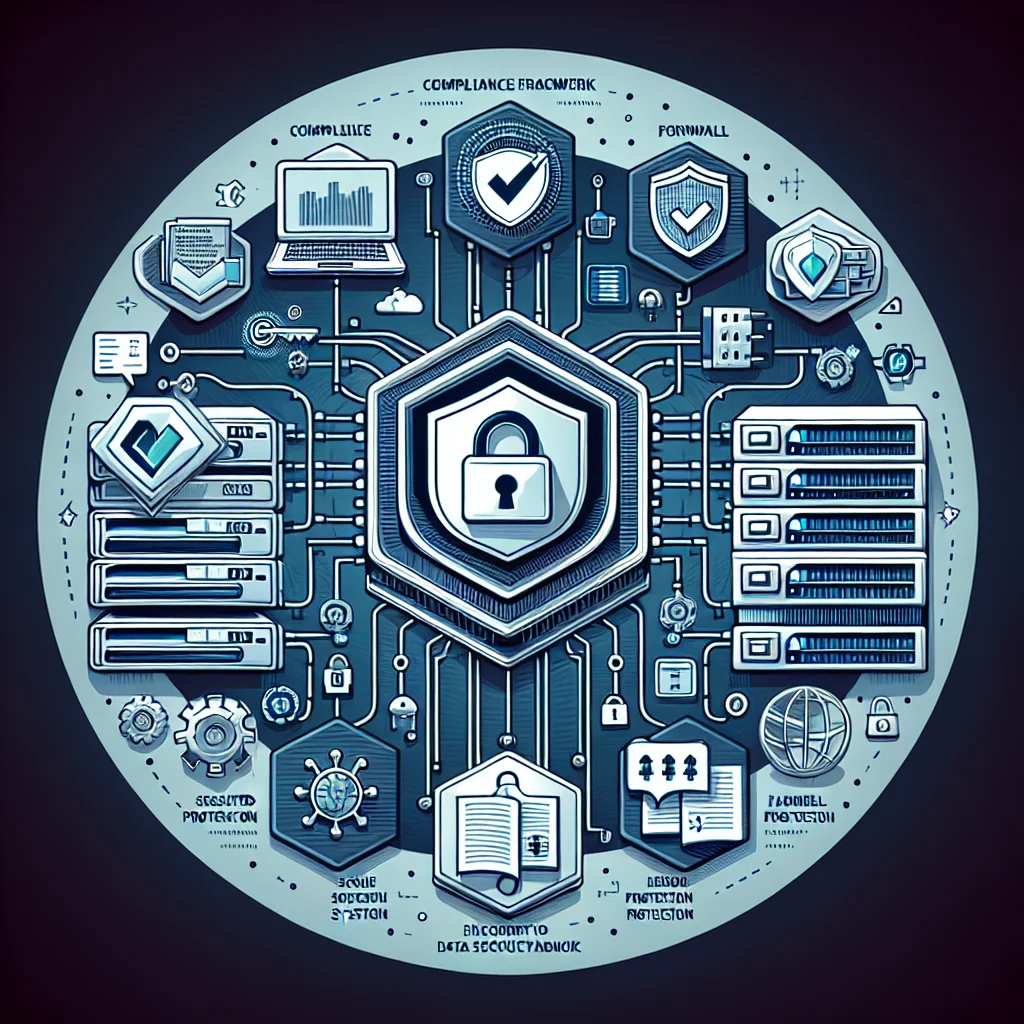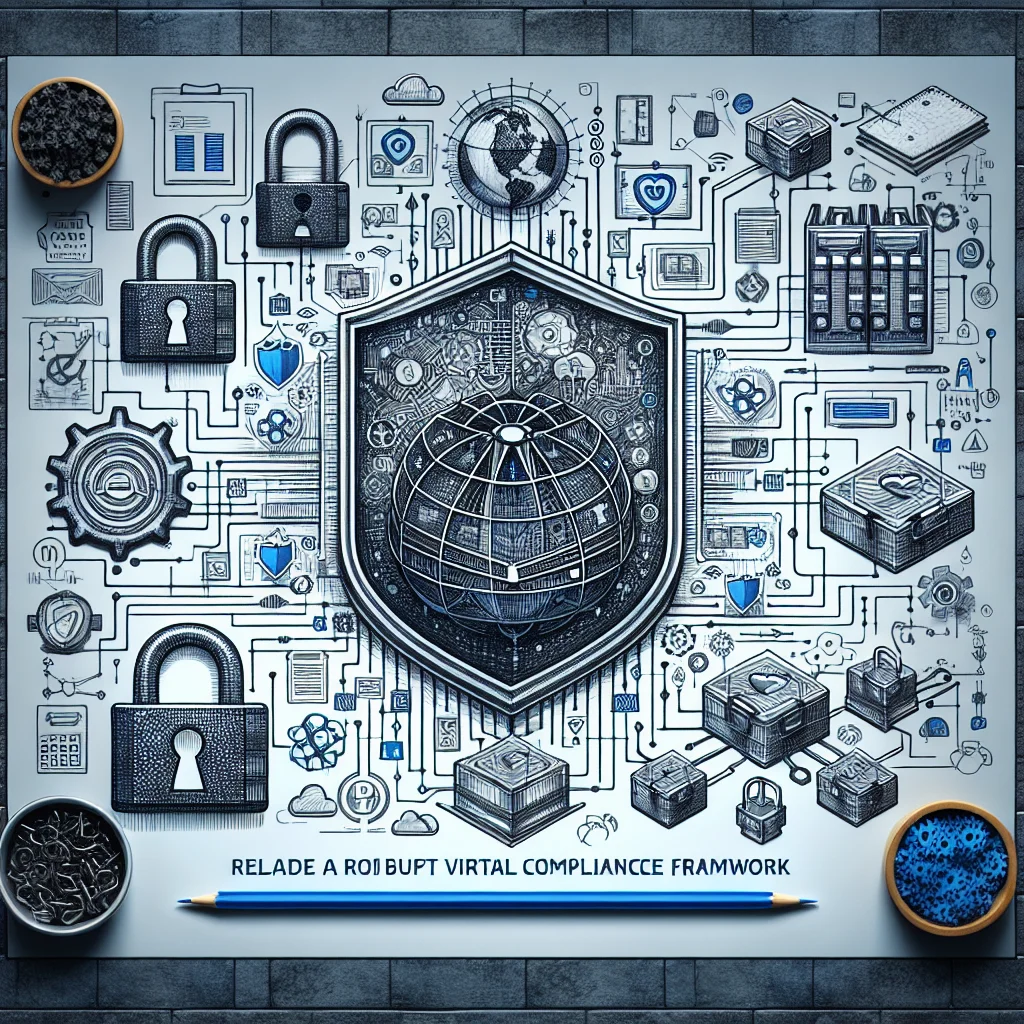In an era where data breaches and cyber threats are escalating, regulatory frameworks like the Saudi Arabian Monetary Authority (SAMA) Cybersecurity Framework have become critical for organizations aiming to maintain robust security postures. This article is designed to guide CISOs and IT professionals through the intricacies of SAMA compliance, answering frequently asked questions, and highlighting common controls across various frameworks.
What is the SAMA Cybersecurity Framework?
The SAMA Cybersecurity Framework is a set of guidelines designed to help organizations in the financial sector manage cybersecurity risks. It aims to enhance the resilience of the financial sector against cyber threats by ensuring that financial institutions implement robust cybersecurity measures.
Who Needs to Comply with SAMA?
Primarily, the SAMA Cybersecurity Framework applies to financial institutions operating under the jurisdiction of the Saudi Arabian Monetary Authority. This includes banks, insurance companies, fintech firms, and other financial entities.
Key Sections of the SAMA Cybersecurity Framework
1. Governance
- Clause A.1.2 – Establishing a Cybersecurity Governance Structure
- Clause A.1.3 – Defining Roles and Responsibilities
2. Risk Management
- Clause B.2.1 – Conducting Regular Risk Assessments
- Clause B.2.2 – Implementing Risk Treatment Plans
3. Cybersecurity Controls
- Clause C.3.1 – Access Control Measures
- Clause C.3.2 – Network Security Controls
4. Monitoring & Detection
- Clause D.4.1 – Implementing Continuous Monitoring
- Clause D.4.2 – Utilizing Intrusion Detection Systems
5. Incident Response
- Clause E.5.1 – Developing an Incident Response Plan
- Clause E.5.2 – Conducting Regular Incident Response Drills
Frequently Asked Questions by CISOs
1. What are the primary objectives of the SAMA Cybersecurity Framework?
The primary objectives are to safeguard the confidentiality, integrity, and availability of information assets, and to ensure the resilience of financial systems against cyber threats.
2. How often should risk assessments be conducted?
According to Clause B.2.1, risk assessments should be conducted at least annually or whenever significant changes occur within the organization.
3. What are the penalties for non-compliance?
Non-compliance can result in penalties ranging from fines to suspension of operations, depending on the severity and impact of the violation.
4. Are there specific requirements for third-party vendors?
Yes, Clause A.1.3 mandates that organizations must ensure that third-party vendors comply with the framework’s requirements, including conducting regular security audits.
5. How can we integrate SAMA requirements into our existing cybersecurity strategy?
Integration can be achieved by mapping SAMA requirements to your existing controls and frameworks such as ISO27001 and NIST, ensuring that overlaps are managed efficiently.
6. What are the documentation requirements?
Organizations must maintain comprehensive documentation of their cybersecurity policies, procedures, and risk assessments as per Clause A.1.3.
7. How does SAMA address emerging threats?
Clause D.4.1 emphasizes the need for continuous monitoring and updating of cybersecurity measures to address emerging threats and vulnerabilities.
8. Are there any specific training requirements?
Yes, Clause A.1.2 requires organizations to provide regular cybersecurity training and awareness programs for all employees.
9. What are the reporting requirements for incidents?
Incidents must be reported to SAMA within 24 hours of detection, as outlined in Clause E.5.2.
10. How do we handle data encryption?
Clause C.3.1 mandates the use of strong encryption methods for data at rest and in transit.
11. Are there guidelines for physical security?
Yes, physical security measures such as access controls and surveillance are covered under Clause C.3.2.
12. How do we conduct a cybersecurity maturity assessment?
Organizations should use a structured framework like the SAMA Cybersecurity Maturity Model to assess and improve their cybersecurity posture.
13. Can we use automated tools for compliance?
Automated compliance tools are encouraged to streamline processes and ensure real-time monitoring and reporting.
14. What are the requirements for backup and recovery?
Clause C.3.1 requires organizations to implement robust backup and recovery procedures to ensure data availability.
15. How do we ensure compliance with international standards?
Mapping SAMA requirements to international standards like ISO27001 can help ensure comprehensive compliance.
16. Are there specific guidelines for cloud security?
Yes, organizations must ensure that cloud service providers comply with the framework’s requirements, including regular security assessments.
17. What is the role of the CISO in SAMA compliance?
The CISO is responsible for overseeing the implementation of SAMA requirements and ensuring continuous compliance.
18. How do we measure the effectiveness of our cybersecurity measures?
Effectiveness can be measured through regular audits, penetration testing, and continuous monitoring.
19. Are there guidelines for secure software development?
Yes, Clause C.3.2 emphasizes the need for secure coding practices and regular security testing during the software development lifecycle.
20. How do we stay updated with SAMA requirements?
Regularly review updates from SAMA and participate in industry forums and training programs to stay informed.
21. What should be included in the Incident Response Plan?
The Incident Response Plan should include defined roles and responsibilities, communication strategies, incident classification criteria, and recovery procedures.
22. How can we ensure the effectiveness of our cybersecurity training?
Effectiveness can be ensured by incorporating practical exercises, simulations, and evaluations to gauge employees’ understanding of cybersecurity protocols.
23. What are the steps to take during a data breach?
Follow the Incident Response Plan, assess the extent of the breach, notify affected parties, and report to SAMA as required. Post-incident analysis should also be conducted.
24. Are there specific guidelines for mobile device management?
Yes, organizations should implement policies governing the use of mobile devices, including encryption, remote wipe capabilities, and secure application management.
25. How do we assess our vendors’ compliance with SAMA?
Regular security audits, compliance checks, and review of external assessments are necessary to ensure that vendors are adhering to SAMA’s cybersecurity guidelines.
26. What kind of documentation is necessary for audits?
Documentation should encompass cybersecurity policies, risk assessments, incident logs, training records, and proof of compliance efforts with SAMA requirements.
27. Are there resources available for understanding the framework in detail?
Yes, SAMA provides guidelines, workshops, and materials that can assist organizations in comprehensively understanding and implementing the Cybersecurity Framework.
28. How often should we conduct cybersecurity audits?
Organizations are advised to conduct cybersecurity audits at least annually, or more frequently if significant changes to the systems or operations occur.
29. What measures should be in place to protect sensitive data?
Organizations must implement data classification, access controls, and encryption to safeguard sensitive data against unauthorized access and breaches.
30. Are there specific incident classification criteria we should follow?
Yes, incidents should be classified based on their severity and potential impact, allowing for tailored responses and prioritization of resources during incident management.
31. What role does employee awareness play in cybersecurity?
Employee awareness is critical; regular training can help identify potential threats and reduce the likelihood of successful attacks, empowering employees to act as the first line of defense.
32. How do we handle third-party vendor risks?
Continuous assessment and monitoring of third-party vendors are essential, including evaluating their cybersecurity measures and requiring compliance with relevant SAMA requirements.
33. What should we do if we find a vulnerability in our system?
If a vulnerability is identified, it should be documented, addressed promptly with appropriate remediation measures, and communicated to relevant stakeholders as per the Incident Response Plan.
34. Can we collaborate with other organizations on cybersecurity efforts?
Yes, collaboration with industry peers can enhance threat intelligence sharing, resource optimization, and best practice implementation, fostering a more robust cybersecurity landscape.
35. What support is available for organizations starting their compliance journey?
SAMA offers various resources, including guidelines, training workshops, and consultancy to help organizations navigate the complexities of compliance with the Cybersecurity Framework.
Process for a Bank to Ensure Compliance with SAMA
To ensure compliance with SAMA, banks should adopt a structured approach that includes the following steps:
- Gap Analysis: Conduct a thorough assessment of existing practices against SAMA requirements to identify gaps and areas needing improvement.
- Policy Development: Develop and update cybersecurity policies and procedures that align with SAMA guidelines, addressing risk management, incident response, and data protection.
- Training and Awareness: Implement regular training programs for all employees to promote awareness of cybersecurity protocols and ensure a culture of compliance.
- Continuous Monitoring: Establish ongoing monitoring mechanisms to assess compliance levels, including regular audits and reviews of cybersecurity measures.
- Vendor Management: Evaluate third-party service providers for compliance with SAMA requirements and ensure they have robust security practices in place.
- Incident Response Preparedness: Develop and regularly test the Incident Response Plan to ensure readiness for potential cybersecurity incidents.
- Reporting and Documentation: Maintain comprehensive documentation of compliance efforts, audit results, training records, and incident logs to provide transparency and accountability.
- Stakeholder Engagement: Regularly communicate with relevant stakeholders, including SAMA, to stay updated on guidelines and best practices, ensuring timely compliance adjustments when needed.
By following this process, banks can systematically address the requirements set forth by SAMA and strengthen their cybersecurity posture.
SAMA and Fintech Process
Leading fintech companies such as Lean Technologies, Mod5r, Tamara, EdfaPay, Cashin, Lendo, and others have significantly influenced the investment landscape between 2021 and 2023. Collectively, these companies generated more than $740 million in revenue in 2022. By December 2022, SAMA had licensed and authorized an additional 89 fintechs in Saudi Arabia.
The regulatory framework established by SAMA for fintech operations is designed to foster innovation while ensuring the integrity and security of financial transactions. Fintech companies must adhere to specific guidelines that encompass risk management, cybersecurity standards, and customer protection. This process begins with the submission of a comprehensive business plan outlining the fintech’s technological solutions and compliance strategies.
Following this, SAMA conducts a thorough assessment of the proposed model, focusing on its potential impact on the financial system and alignment with existing regulations. Once approval is granted, fintech firms are expected to implement robust cybersecurity measures, including regular audits and risk assessments. Additionally, maintaining transparent communication with SAMA is essential for ongoing compliance, allowing for timely updates on operational changes or emerging risks. By adhering to these processes, fintech companies can navigate the regulatory landscape effectively, ensuring a secure and innovative environment for their services.
The SAMA Sandbox refers to the regulatory sandbox established by the Saudi Arabian Monetary Authority (SAMA). A regulatory sandbox is a controlled environment where financial institutions, fintech companies, and other stakeholders can test innovative financial products, services, or business models with real customers but under the supervision of the regulatory authority.
Key Features of the SAMA Sandbox:
- Innovation Facilitation: The SAMA Sandbox is designed to foster innovation in the financial sector by allowing companies to experiment with new technologies, products, and services that may not fully comply with existing regulations.
- Regulatory Oversight: Participants in the sandbox operate under a regulatory framework tailored to provide enough flexibility for innovation while ensuring consumer protection, financial stability, and compliance with anti-money laundering (AML) and counter-terrorism financing (CTF) requirements.
- Controlled Testing: Companies can test their solutions on a limited scale, usually with a specific number of customers or for a limited time, before potentially scaling up to a full market launch.
- Collaboration with Regulators: The sandbox environment encourages collaboration between innovators and SAMA, allowing for a better understanding of the regulatory implications of new technologies and fostering a more adaptive regulatory approach.
- Eligibility: Typically, fintech startups, financial institutions, and technology providers offering innovative solutions in areas such as payments, lending, blockchain, or artificial intelligence may apply to participate in the sandbox.
The SAMA Sandbox is part of Saudi Arabia’s broader Vision 2030 initiative, which aims to diversify the economy and develop the financial sector, positioning the country as a leading hub for fintech innovation in the Middle East.
KSA Open Banking Framework
The KSA Open Banking Framework refers to the regulatory framework established by the Saudi Central Bank (SAMA) to implement and govern open banking initiatives in the Kingdom of Saudi Arabia (KSA). Open banking is a system that allows third-party financial service providers to access consumer banking, transactional, and other financial data from banks and non-bank financial institutions through the use of APIs (Application Programming Interfaces). This system aims to foster innovation, enhance competition, and provide consumers with more personalized financial services.
Key Components of the KSA Open Banking Framework:
- Regulatory Guidelines:
- Data Sharing: The framework sets out clear guidelines for the secure sharing of customer data between banks and third-party providers (TPPs), with the customer’s explicit consent.
- APIs: Banks are required to develop and maintain secure APIs that TPPs can use to access customer data and provide various financial services.
- Compliance Requirements: Both banks and TPPs must comply with the regulatory requirements laid out by SAMA, including data protection, privacy, and cybersecurity standards.
- Customer Consent:
- The framework emphasizes the importance of customer consent in data sharing. Customers must be fully informed about how their data will be used, and they must actively consent to share their data with third-party providers.
- Third-Party Providers (TPPs):
- TPPs can be fintech companies, payment service providers, or other financial institutions that offer services such as account aggregation, payment initiation, and financial management tools. These providers must be licensed by SAMA to operate within the open banking ecosystem.
- Consumer Protection:
- SAMA’s framework includes strong consumer protection measures, ensuring that customers’ data is handled securely and that they are protected from fraud and unauthorized access.
- Implementation Phases:
- The KSA Open Banking Framework is being rolled out in phases. Initially, it focused on enabling account information services (AIS), which allow customers to view and manage their financial information across different institutions. Later phases are expected to introduce more complex services, such as payment initiation services (PIS).
- Market Impact:
- The open banking initiative is expected to drive innovation in the financial sector by encouraging the development of new financial products and services. It also aims to increase competition by allowing new players to enter the market, thereby benefiting consumers with better choices and more competitive pricing.
Strategic Importance:
The KSA Open Banking Framework is part of Saudi Arabia’s Vision 2030, which aims to diversify the economy and modernize the financial sector. By embracing open banking, Saudi Arabia seeks to position itself as a leader in fintech innovation in the region, providing consumers with enhanced financial services and contributing to the overall growth of the digital economy.
This initiative is expected to transform the financial landscape in Saudi Arabia by enabling a more connected, competitive, and innovative financial ecosystem.
Common Controls Across Frameworks
Understanding the common controls between SAMA and other frameworks like ISO27001 and PCI DSS can simplify compliance efforts. Here are some examples:
Access Control
- ISO27001 Clause A.9.1.1 – Access Control Policy
- PCI DSS Requirement 7.1 – Limit Access to System Components
Incident Response
- ISO27001 Clause A.16.1.1 – Management of Information Security Incidents
- PCI DSS Requirement 12.10 – Implement an Incident Response Plan
Risk Assessment
- ISO27001 Clause A.8.2.1 – Information Security Risk Assessment
- PCI DSS Requirement 12.2 – Risk Assessment Process
Data Protection
- ISO27001 Clause A.18.1.1 – Protection of Personal Information
- PCI DSS Requirement 3.4 – Render Pan Unreadable
Security Monitoring
- ISO27001 Clause A.12.4.1 – Event Logging
- PCI DSS Requirement 10.3 – Create Time-Stamping Mechanisms for Events
Change Management
- ISO27001 Clause A.14.2.1 – Change Control Procedures
- PCI DSS Requirement 6.4 – Develop and Maintain Secure Systems and Applications
Staff Security
- ISO27001 Clause A.7.2.1 – Security Roles and Responsibilities
- PCI DSS Requirement 12.6 – Implement a Security Awareness Program
Physical Security
- ISO27001 Clause A.11.1.1 – Physical Security Policy
- PCI DSS Requirement 9.1 – Secure Physical Access to Cardholder Data
Asset Management
- ISO27001 Clause A.8.1.1 – Inventory of Assets
- PCI DSS Requirement 2.4 – Identify and Classify System Components
Security Incident Management
- ISO27001 Clause A.16.1.2 – Reporting Information Security Events
- PCI DSS Requirement 12.2 – Develop and Implement Incident Response Plan
Business Continuity
- ISO27001 Clause A.17.1.1 – Information Security Continuity
- PCI DSS Requirement 12.10.1 – Maintain and Test Incident Response Plan
Encryption
- ISO27001 Clause A.10.1.1 – Policy on the Use of Cryptographic Controls
- PCI DSS Requirement 3.5 – Protect Cardholder Data with Strong Cryptography
Supplier Management
- ISO27001 Clause A.15.1.1 – Information Security in Service Agreements
- PCI DSS Requirement 12.8 – Third-Party Service Provider Management
These common controls not only facilitate compliance with SAMA but also reinforce an organization’s overall cybersecurity posture by establishing comprehensive security measures across various domains.
Conclusion
Navigating the complexities of the SAMA Cybersecurity Framework is crucial for financial institutions in the Middle East. By understanding the framework’s requirements and leveraging automated compliance platforms, CISOs and IT professionals can streamline their compliance efforts and enhance their organization’s cybersecurity posture.
If you’re a CISO or IT professional looking to streamline your compliance efforts and enhance your organization’s cybersecurity posture, consider partnering with a trusted automated compliance platform such as ComplyHawk, which is a specialist in this framework and region.



